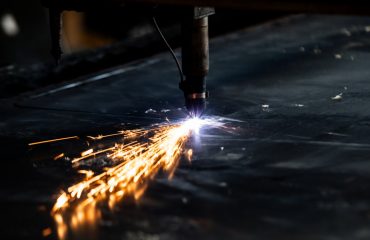body { font-family: sans-serif; line-height: 1.6; }
h1, h2, h3 { color: #333; }
img { max-width: 100%; height: auto; }
Fire-resistant steel isn’t just steel that can withstand high temperatures; it’s a critical component in ensuring safety and structural integrity in countless applications where fire poses a significant threat. From skyscrapers and bridges to offshore platforms and industrial facilities, these materials play a vital role in protecting lives and property. This comprehensive guide explores the fascinating world of fire-resistant steel, delving into its properties, applications, manufacturing processes, and future advancements.
Understanding the Properties of Fire-Resistant Steel
Fire-resistant steel, unlike ordinary steel, possesses enhanced properties that allow it to maintain its structural integrity and strength even under extreme heat. This resilience is achieved through various metallurgical approaches and alloying additions. Key properties include:
- High-Temperature Strength: Fire-resistant steel retains significant strength at elevated temperatures, preventing collapse or deformation during a fire.
- Elevated Creep Resistance: It resists deformation under sustained high temperatures, ensuring long-term stability.
- Oxidation Resistance: Special alloys minimize the formation of scale and oxidation at high temperatures, preserving the steel’s integrity.
- Thermal Stability: The material experiences minimal dimensional changes due to heat, preventing warping or buckling.
- Ductility at High Temperatures: This allows for some deformation without complete failure, absorbing energy and delaying collapse.
These properties are crucial in ensuring that structures built with fire-resistant steel can withstand the intense heat and stress of a fire, providing valuable time for evacuation and minimizing damage.
Manufacturing Processes: Crafting Fire-Resistant Steel
The production of fire-resistant steel involves specialized techniques to achieve the desired properties. Common methods include:
- Alloying: Adding specific elements like chromium, nickel, molybdenum, and manganese significantly improves high-temperature strength and oxidation resistance. The precise composition depends on the required performance characteristics and application.
- Controlled Cooling: Precise control of the cooling rate during manufacturing affects the microstructure of the steel, influencing its mechanical properties at high temperatures.
- Heat Treatment: Specific heat treatments can further enhance the desired properties, such as strength and ductility at elevated temperatures.
- Protective Coatings: While not strictly part of the steel itself, coatings like intumescent paints or sprayed fire-resistant materials can provide an additional layer of protection, extending the fire resistance of the steel structure.
The precise manufacturing process is carefully tailored to meet the specific requirements of the application, ensuring the final product meets stringent safety standards.
Applications of Fire-Resistant Steel: Where It Makes a Difference
Fire-resistant steel finds applications across a broad spectrum of industries and structures where fire safety is paramount:
- High-rise Buildings: Used extensively in structural elements, columns, beams, and fire-rated walls to maintain stability during fires, allowing for safe evacuation.
- Bridges and Tunnels: Ensures the structural integrity of these critical infrastructure components in case of fire, minimizing disruption and preventing collapse.
- Offshore Platforms: Essential for maintaining the structural integrity of these platforms in the event of a fire, safeguarding personnel and equipment.
- Industrial Facilities: Used in areas with high fire risks, such as chemical plants and power stations, to protect equipment and prevent catastrophic failures.
- Fire-Rated Doors and Walls: Fire-resistant steel forms the core of many fire-rated assemblies, providing crucial containment and delaying the spread of flames.
The versatility and high performance of fire-resistant steel make it indispensable in protecting life and property in countless high-risk environments.
Testing and Standards: Ensuring Quality and Safety
Rigorous testing and adherence to international standards are crucial to verify the fire-resistant properties of steel materials. These tests ensure the steel meets the required performance levels under extreme fire conditions. Common testing methods include:
- Fire Resistance Tests: These tests subject the steel to controlled fire conditions to assess its ability to maintain structural integrity and prevent the passage of flames.
- Mechanical Testing at High Temperatures: These tests evaluate the steel’s strength, ductility, and other mechanical properties at various elevated temperatures.
- Corrosion Resistance Tests: These tests assess the steel’s resistance to corrosion at high temperatures, ensuring its long-term durability.
Organizations like ASTM International and ISO develop and maintain standards for fire-resistant steel, providing a framework for quality control and ensuring that the materials used meet the required safety levels.
Future Trends in Fire-Resistant Steel Technology
Research and development continue to drive advancements in fire-resistant steel technology, focusing on:
- Improved Alloying Techniques: Developing new alloys with enhanced high-temperature properties and improved resistance to oxidation and corrosion.
- Advanced Manufacturing Processes: Exploring innovative manufacturing methods to create stronger, lighter, and more cost-effective fire-resistant steel.
- Hybrid Materials: Combining fire-resistant steel with other materials, like concrete or composites, to create hybrid structures with enhanced fire resistance and other desirable properties.
- Smart Materials: Incorporating sensors and monitoring systems into fire-resistant steel structures to provide real-time data on their condition and performance during a fire.
These advancements promise to further enhance the safety and performance of fire-resistant steel, making it an even more critical component in safeguarding lives and property in the future.
Conclusion: Fire-resistant steel is a vital material in modern construction and industrial applications. Its unique properties, rigorous testing, and ongoing advancements ensure its continued importance in protecting us from the devastating effects of fire.
Tags: fire resistant steel, fireproof steel, high temperature steel, structural steel, fire safety




